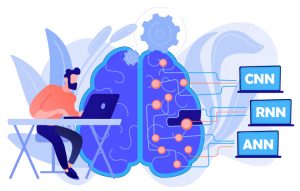Tracking injuries, transportation mishaps, leading indicators, and related environmental incidents are not easy. Moreover, identifying the root cause of why an incident occurred and what preventive measures to take so it doesn’t happen again is also a big concern for EHS consulting companies.
Inculcating IoT, machine learning, and big data will enable businesses with scalable and predictive models to reduce operational risks, monitor workplace safety, and optimize costs. Companies that implement big data and machine learning will be able to benchmark themselves, see correlations in their data that they may have not been aware of, and receive predictive and prescriptive insights that will help them improve their EHS operations. Let’s understand how these technologies will impact the following EHS functions.
Dark data
Often when organizations talk big data, they think of data in petabyte and exabyte. Having a large volume of data doesn’t determine the ability to drive predictive insights. Instead of focusing on volume of data, companies should focus on quality of data.
Poor data across businesses and the government costs the U.S. economy $3.1 trillion dollars a year. – Harvard Business Review
Many organizations collect, process, and store volumes of environmental and safety data, such as air emissions, water use and discharges, waste generation, injuries, and risk assessments. However, much of this data is locked away in spreadsheets or various databases that are inaccessible by others, who have to rely on their peers to analyze or use those datasets.

Business transformation with big data and machine learning
Webinar agenda
- Overview: Big data and machine learning
- Real world uses and benefits of ML
- Business uses of ML
- ML solutions for varied industries
- ML & data visualization: Seeing is believing
- Pathway to success – Onboarding (PoV)
- Demo
- Q&A
This is known as ‘dark data’. While environmental, health, and safety professionals understand the data, they may not be able to eliminate the noise that is intrinsic within large datasets. Moreover, they may improperly correlate data, which makes it hard for them to capitalize and drive their EHS functions.
Machine learning services enable organizations with the ability to autonomously collect, share, and analyze data, which makes it easier to extract relations between different datasets and provide value out of the processed data.
Waste management
Preventative maintenance programs successfully reduce operational downtime, eliminate duplicative workflows, and enable workforce to distribute efficiently.
Machine learning helps companies to identify when a higher number of active wastes are generated in a particular timeframe. Also, it helps to visualize the location of the factory or manufacturing unit to identify what kind of waste is produced by them and in what quantity.
Occupational safety
A total of 5,190 workers died from a work-related injury in the U.S. in 2016. – Bureau of labor statistics
Big data and machine learning helps organizations identify several risk factors that lead to mishaps or incidents. These risk factors are classified as low, medium or high, and based on the output, corrective actions are taken. This enables companies to prepare for future challenges, plan and set health and safety priorities.
Taking such a proactive approach improves both safety and production results. Companies will be able to make savvy decisions surrounding practices that are putting their employees at a higher risk, and make more informed decisions about how to alter these practices to prevent accidental occurrences.
Risk assessments
Predictive analytics powered by artificial intelligence and machine learning assists companies in identifying areas of their business that are most exposed to risk. In the EHS realm localized datasets are needed to reduce the prediction error. Utilizing predictive technologies enables management to be more proactive and opportunistic in the way they manage their operations. Machine learning enables them to visualize insights based on past data. Moreover, it provides realistic assumptions about what is likely to happen in future, mitigating further risks. Collecting and analyzing lagging indicators into the safety management system enables organizations to become more proactive in identifying and reducing operational risks.
Auditing
Higher level of assurance is required in the process of auditing. It is essential to understand risks that the companies are facing and also foresee potential risks. Leveraging predictive analytics enables managers to quickly identify trends and put preventative measures in place before a process, procedure or asset fails.
Inculcating big data and machine learning into the audit function will empower companies with proactive readiness for newer risks, identify gaps quickly, and effectively investigate the same. Health and safety executives using predictive data analytics can improve their effectiveness in quickly identifying sites that needs audit or inspection or to discern which site is not adhering to the set compliance standards.
Revolutionizing the EHS ecosystem
Big data solutions have the potential to transform business and enable companies to create new revenue streams. It helps EHS professionals to bespeak value by improving performance, reducing compliance costs, mitigating risks, and improving operational eco-efficiency.
Machine learning services will undoubtedly be able to demonstrate cost savings in terms of an annual decrease in regulatory fines and penalties, eliminating hazardous waste streams from the manufacturing process, or reducing worker compensation cases. It also helps the management through continuous improvement efforts.
Softweb Solutions believes that these technologies are disrupting in the field of EHS, while providing streamlined work processes, better flexibility and more effective business models that are set to transform safety and quality of the workplace.
Interested in learning more? Contact our data experts. They will guide you further on how these technologies can give your EHS operations a boost.








